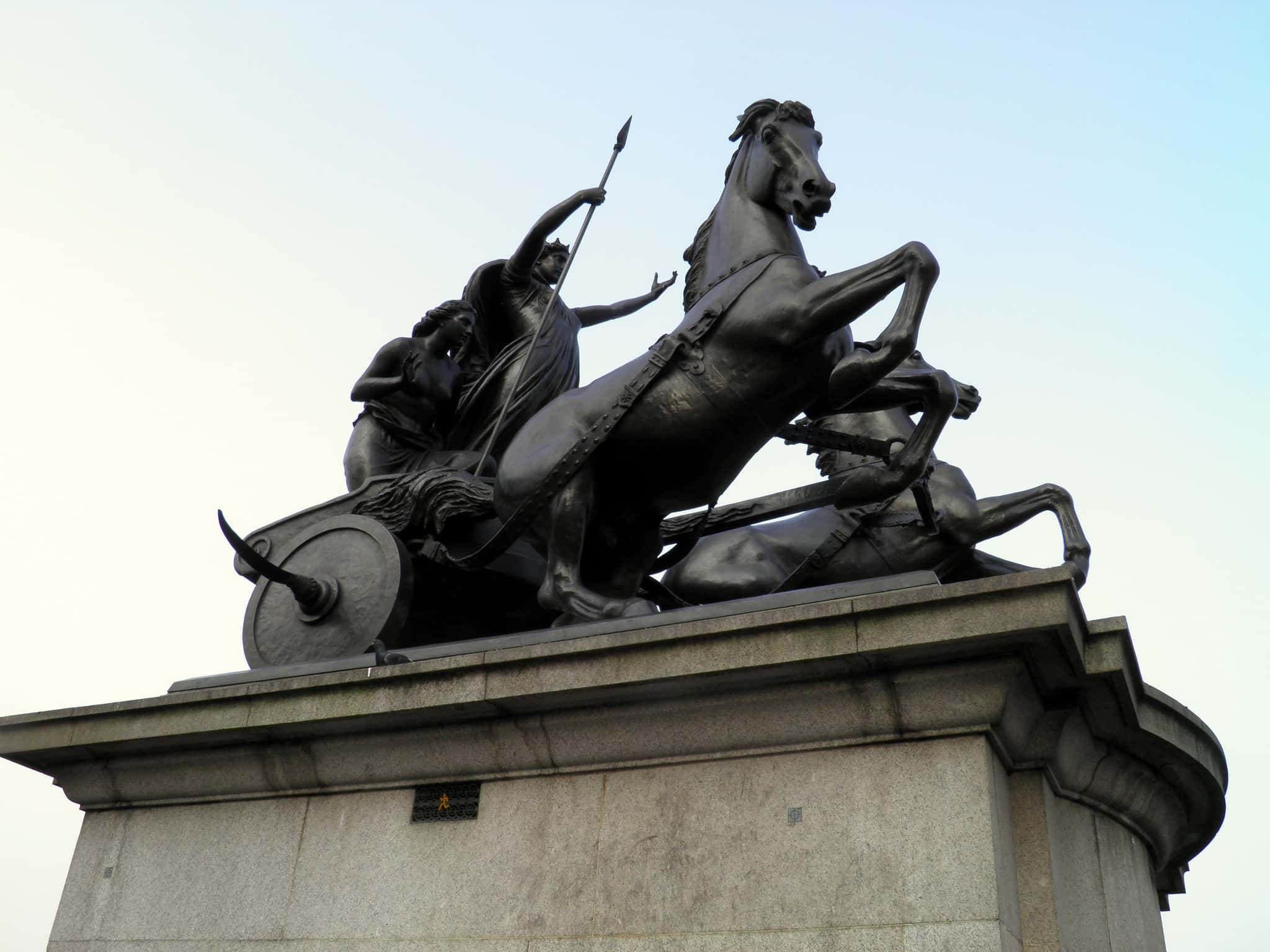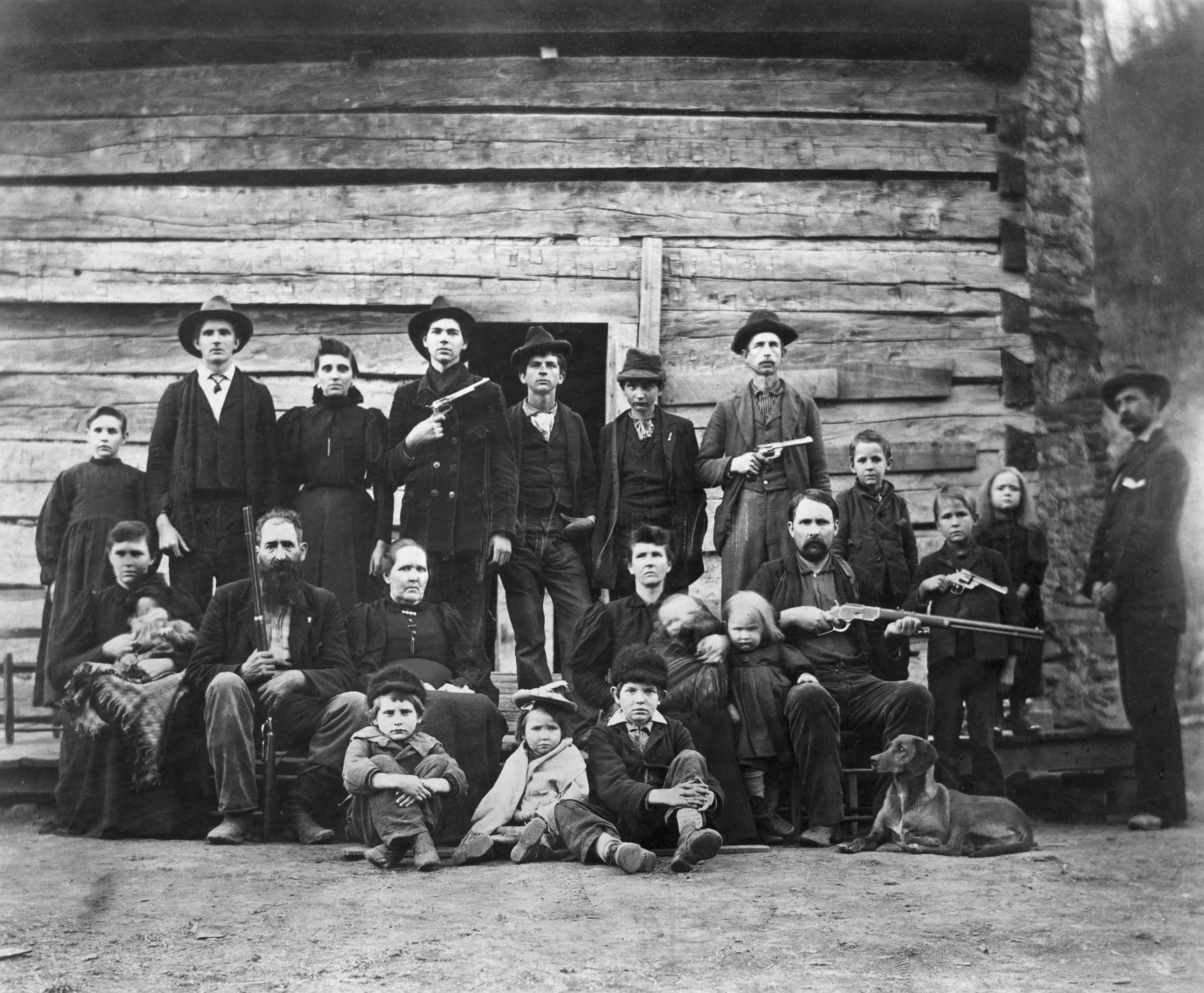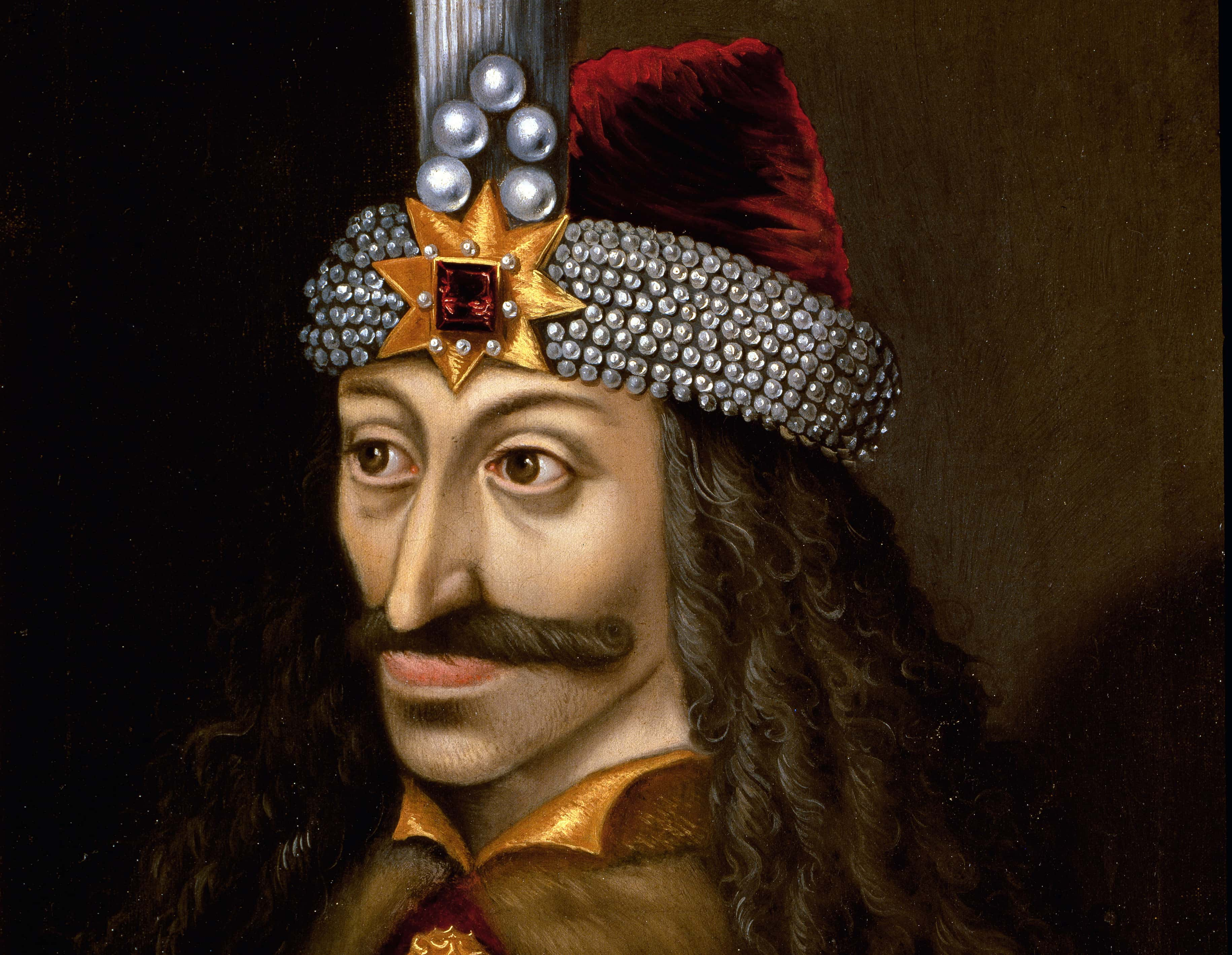An eye for an eye, as Gandhi said, may make the whole world blind—but these avengers don't care. Some of these vengeful acts are served cold, others are red hot. Some are just plain funny. Here are 24 spiteful facts about the greatest revenges throughout history.
24. A Taste of His Own Medicine
In 2003, Michigan entrepreneur Alan Ralsky was known as “Spam King” for the millions of unwanted spam emails he sent. In retaliation, people who were on the receiving end of these spam emails signed Ralsky up for physical spam, in the form of junk mail, which would arrive at his lavish house. At the height of this prank, Ralsky was receiving over one hundred pounds of junk mail every day.
23. Roman Revenge
The Roman empire may not have been known for their diplomacy, but back in 60 CE they pulled a particularly nasty stunt. Boudicca, queen of the Iceni tribe in what is now Britain, agreed to cooperate with Roman Emperor Nero, agreeing to share her land to avoid bloodshed. Nero broke his word and instead made the area a slave province—and what’s more, Roman soldiers flogged Boudicca and raped her two daughters. Infuriated, Boudicca took her revenge: she raised an army and attacked three Roman strongholds—including Colchester, which at the time was the Roman capital of Britain. Thousands of Roman soldiers died, and Boudicca poisoned herself on the battlefield to avoid being captured.
22. Family Feud, 1888 Edition
American families the Hatfields (mostly of West Virginia) and the McCoys (mostly of Kentucky) were in a long, bloody feud that lasted decades. Both sides were under the impression that they were getting revenge on the other for some previous atrocity. This led to dozens dying on both sides. The feud peaked near the end of the 19th century with what has become known as the “1888 New Years Night Massacre.” Several members of the Hatfield clan surrounded the cabin of Randolph McCoy, the McCoy's leader. The Hatfields set the cabin on fire, killing McCoy's two children and severely injuring his wife. The McCoys quickly retaliated with the battle of Grapevine Creek in which several Hatfields were captured or killed.
21. Hell Hath No Fury
Around 900 CE, in what is now Eastern Europe, a woman named Olga married Igor, the future king of Kievan Rus (today Kiev), and had a son, Svyatoslav. Seems great, right? Wrong: King Igor was assassinated by a rival tribe, the Drevlians, while Svyatoslav was still a child. The assassins wanted to take over the region, and tried to force Olga to marry their king, Mal. That wasn’t quite what Olga had in mind. She wanted to be the regent of the kingdom herself until Svyatoslav was old enough to take the throne, and there was no way she was going to let the people who assassinated her husband tell her what's what. When the Drevlians sent 20 men to try and persuade her, she had them buried alive. She then told the Drevlians that she would accept the marriage proposal but only if Mal sent the top citizens of his kingdom to escort her to their capital. When he did, Olga trapped them in a bathhouse and set it on fire. Fury, thy name is Olga.
20. Bad Bread
After WWII ended, some Jewish survivors of the war formed a group called Nokmim, Hebrew for “avengers”—and they did just that, tracking down surviving Nazi soldiers and killing them as revenge for the horrors of the Holocaust. In 1946, the Nokmim infiltrated Stalag 13, a detention centre in Nuremburg for Nazi prisoners of war. All of the bread for the centre, the Nokmim learned, was supplied by a single bakery. A member of the group named Arye Distel got a job working for the bakery. Over the course of several days, Arye smuggled in bottles labeled “medication” (which was really arsenic) and hid them under the floorboards of the bakery. One Saturday, three other Nokmim members snuck into the bakery during shift change and the four avengers painted nearly 3000 loaves of bread with the poison. The bread was served to the prisoners the following day and over 2000 of them fell ill. Initial reports stated that there were 200-300 deaths but a modern study by the associated press revealed no one actually died as a result.
19. Keep Your Friends Close and Your Enemies Closer
During WWII, a young Romanian man named Eliahu Itzkovitz watched in horror as a Nazi soldier murdered his entire family, leaving him as the only survivor. All he remembered of this soldier was a last name: Stănescu. That was good enough for Itzkovitz. He tracked Stănescu down to the French Foreign Legion, but instead of just killing Stanescu outright, Itzkovitz did something much more devious. He joined the French Foreign Legion himself, went through the Legion’s intense training, and through many careful deceptions ended up deployed in the same battalion as Stănescu. Slowly, he befriended the man who killed his family, until one day the two men were patrolling together in Băc Ninh. Itzkovitz revealed himself, confronted Stănescu, and killed him.
18. Slice and Dice
Lorena Bobbitt’s husband John was a real piece of work: he was unfaithful, physically abusive, and he sexually assaulted Lorena multiple times. On the night of June 23, 1993, John came home drunk, assaulted Lorena, and then fell asleep. This was the last straw for Lorena: she grabbed a kitchen knife and cut off John’s penis. Lorena got in her car and drove away, at first throwing the appendage into a field before having second thoughts and calling the police. John's genitals were retrieved and later surgically reattached, but Lorena’s revenge had already succeeded.
17. Alec Unchained
Alec Turner, the inspiration for Quentin Tarantino’s movie Django Unchained, was born a slave in Virginia in 1845. Unlike the majority of people living in slavery at that time, Alec learned how to read and write under the secret tutelage of the plantation owner’s granddaughter. Once these lessons were discovered, however, Alec was brutally whipped as punishment. During the American Civil War, Alec escaped, joined the Union Army, and led a platoon of soldiers back to the plantation—where he personally shot and killed the overseer that had made his life a living hell.
 Django Unchained
Django Unchained
16. Everything Isn’t About You
After a bad breakup, musical artist Carly Simon wrote what has become her most recognizable song: “You’re So Vain,” which includes the truly scathing lyrics “you’re so vain / you probably think this song is about you.” Simon’s ex Warren Beatty definitely did: in an interview, Simon said that “[Beatty] certainly thought it was about him—he called me and said thanks for the song" but she refused to confirm if Beatty was indeed the song’s subject. Instead, Simon has publically equivocated about the man in the song, saying that the subject is three men, not one man, or that it is “men” in general.
15. The Heir to Carly Simon’s Throne
Following in Simon’s footsteps is superstar Taylor Swift, who is notorious for writing songs about her ex boyfriends. The list of song subjects is a long one—Harry Styles, Joe Jonas, Jake Gyllenhaal, etc—but perhaps no ex of Taylor’s has been so satisfyingly excoriated as John Mayer. The two music stars dated for a few months in 2009 and 2010, when Swift was 19 and Mayer was 32. The song "Dear John"—the lyrics of which took a direct shot at the age difference between the two of them, with Swift singing “don’t you think I was too young / to be messed with”—has become widely regarded as one of Swift’s best songs. Mayer felt the sting, telling Rolling Stone magazine that the song’s success “humiliated” him. For her part, Swift took a lesson straight from Carly Simon’s playbook and said that it was “presumptuous” for Mayer to assume the song was about him.
14. No Dogs Allowed
Famously dramatic poet Lord Byron was upset to learn that the Cambridge university he attended did not allow students to keep dogs on campus. Rather than grin and bear it, Byron decided to “bear” it in a different way—by bringing one to campus. The rules, he argues, only prohibited dogs—they said nothing about pet bears.
13. Count of Monte Cristo, IRL
Pierre Picaud, a French shoemaker who lived in the 19th century, has long been suspected as being the inspiration for the classic adventure novel The Count of Monte Cristo, written by Alexander Dumas. Picaud awoke the green-eyed monster in three of his friends when he became engaged to a rich woman. These jealous friends then reported him to the authorities, falsely accusing him of being an English spy. While in prison, Picaud befriended a wealthy fellow inmate, who left Picaud his fortune. After Picaud’s release, he spent the next decade meticulously plotting against—and then murdering—his three former friends.
12. Marked for Life
In 2006, an Indiana man named Anthony Stockelman was imprisoned for molesting and then murdering a 10-year-old girl named Katie Collman. The evidence against him was damning, and Stockelman pled guilty to avoid the death penalty. At first, Stockelman seemed at ease in prison—but he did not realize that he was in the same penitentiary as one of Katie’s cousins. One night the cousin and a few fellow inmates forcibly tattooed Stockelman’s forehead. The tattoo in question? “KATIE’S REVENGE.”
11. Young, Scrappy, and…Vengeful?
Aaron Burr and Alexander Hamilton had never exactly been buddies, but relations between the two men took a fatal turn in 1804. Hamilton had been instrumental in helping Thomas Jefferson win the presidency over Burr; later on, Burr ran for governor of New York, but found that once again, Hamilton was working against him. Enough was enough: Burr challenged Hamilton to a duel and shot him, fatally wounding him and giving Lin Manuel Miranda all the material he would ever need.
10. Cross Your Heart and Stick A Needle In…Wait…
In Russia, revenge takes you: in the late 1990s and early 2000s, drug use in Russia was the source of public alarm. Over the span of a decade, the number of heroin addicts in Russia exploded from a few dozen to over 60,000. In 2000, a group of security guards in Russia grabbed a suspected drug dealer, beat him publicly, and then—and this is the real kicker—tied him pantless to a tree, where they repeatedly stuck his bare bottom with hypodermic needles. Ouch.
9. Pink Sari Warriors
In India, where sexual violence is a major problem and women’s rights are poorly protected, some women have decided to take justice into their own hands. In the Uttar Pradesh province in Northern India, the Gulabi Gang of women, easily recognizable by their bright pink saris and bamboo staffs, take revenge on men who have been accused of abusing or otherwise mistreating women.
8. The People’s Court
In 2003, an Indian man named Akku Yadav was on trial for 24 criminal charges—which included murder, but did not include sexual assault. This was an issue because amongst women who lived in the impoverished areas of Nagpur, Yadav was an known serial rapist. However, Yadav bribed local law enforcement to look the other way. When a woman tried to report a sexual assault committed by Yadav or one of his gang members, she was often laughed at or dismissed. During his trial, a group of 200 women—convinced that the court would fail to convict Yadav—descended on the witness stand and attacked him. He was stoned, stabbed, castrated with a kitchen knife, and had chilli powder thrown in his face and on his open wounds. Within 15 minutes, he was dead.
7. Skidmore Bully
Skidmore, Missouri had a problem, and that problem had a name: Ken Rex McElroy, the town bully. McElroy took bullying to a whole new level in Skidmore, stealing livestock, committing arson, attacking women, and even forcing a very young girl to be his “bride.” The town, to put it lightly, did not like him. On July 10, 1981, McElroy was fatally shot on Main Street in Skidmore. Although there were between 30 and 40 witnesses, and the crime was committed in the middle of the day, the townspeople developed a suspicious group amnesia, and refused to cooperate with the police.
6. Dangerous Gloves
Conan II, the Duke of Brittany in the early 11th century, did not get along with William of Normandy. Conan refused to support William’s plan to invade England in 1066, and in fact took advantage of William’s absence during the invasion to try to take control of William’s lands himself. William succeeded in his invasion, which meant that Conan had seriously upset the newly minted King of England. William took his revenge by having Conan assassinated, reportedly with poisoned riding gloves.
5. Julius and the Pirates
Julius Caesar was captured by Cicilian pirates in 75 BCE while he was on the Aegean Sea. The pirates demanded a ransom of 20 talents of silver for Caesar’s return (around $600,000 today), but Caesar indignantly demanded that they ask for more money; 50 talents. They did so, and while the ransom demand was being delivered Caesar charmed many of the pirates, playing games with them and generally demanding that they treat him as one of their own. He promised them, however, that he would not forget the insult of being captured. Caesar kept his word: once the ransom had been paid and he was returned to Rome, he made a point of hunting down the pirates, capturing them, reclaiming the 50 talents of silver, and then having his soldiers slit their throats.
4. Hugh Glass: Revenant
Hugh Glass was an American frontiersman who lived and worked in the late 18th and early 19th century. While on a group expedition, Glass came between a mama grizzly and her two cubs, and he was brutally mauled by the bear. Glass and his companions expected that he would die from his injuries, and Glass asked that two men from the company stay behind with him to bury him after he died. These two men, John S. Fitzgerald and a man known as “Bridger,” stayed back—but not for long. Fairly quickly they abandoned the terribly wounded Glass and returned to the group, lying that Glass had died. Glass, however, did not give up so easily. He regained consciousness and realized that he had been abandoned by his fellow frontiersmen, left without a weapon or food or any useful tool, and that his precious rifle had been stolen from him. Glass set his own broken leg and crawled the 200 miles to the nearest fort. He then tracked down the two men who had abandoned him. Glass forgave Bridger, who had been only 17 at the time, but when he found Fitzgerald he exposed him publicly—and demanded that Fitzgerald return his rifle.
 The Revenant (2015), Regency Enterprises
The Revenant (2015), Regency Enterprises
3. Vlad the Impaler
Pretty much every story about Vlad the Impaler is a little bit revenge-y, but this one is especially brutal. When Turkish rulers came to visit, they refused to remove their turbans in Vlad’s presence, as it was against their culture. For most people, this probably wouldn’t be a situation that required revenge. But for the man who was the inspiration for Dracula, it certainly was. Vlad took his revenge on the Turkish visitors by having their turbans nailed to their heads.
2. Dread Pirate Jeanne
After her husband was beheaded by the King of France in 1343, Jeanne de Clisson sprang into action. She swore that she would have her revenge on the rulers who had killed her husband, and so she reached out to the King of England for assistance. The English King, along with some Breton sympathizers closer to home, paid for Jeanne to outfit three warships, which she painted black. Apparently not one for subtlety, Jeanne named the flagship My Revenge. She then proceeded to spend year terrorizing the English channel, hunting down French ships. When she caught one, she would kill nearly all the sailors—but she would always save one or two, so that they could return to the French King and tell him what Jeanne had done. She definitely earned her nickname: “The Lioness of Brittany.”
1. Don’t Push The Pusser
Aside from having a great name, Buford Pusser was also one heck of a sheriff. He was the head lawman in McNary County, Tennessee from 1964-1970, and he seems to have been a member of the moral police as well. Pusser was well known in the county for his hard-line stance against all manner of vices, from moonshining to gambling, and it earned him some powerful enemies, including some groups of organized crime. The State Line Mob attempted to assassinate Pusser in 1967. They failed to kill the sheriff, but Pusser’s wife Pauline was murdered in the attack. Pusser vowed to take his revenge, as he knew who the four attackers were. The first one was killed by a hit man, widely assumed to have been hired by Pusser. The next two just turned up shot to death in Texas; again, many assume that Pusser was responsible, but no one has ever been able to prove it. The last assailant escaped, sort of—he was sent to prison for an unrelated crime. It seems like prison might have been the safest place for him to be.
Sources: 1, 2, 3, 4, 5, 6, 7, 8, 9, 10, 11, 12, 13, 14, 15, 16, 17, 18, 19, 20, 21, 22, 23, 24, 25, 26, 27, 28

































